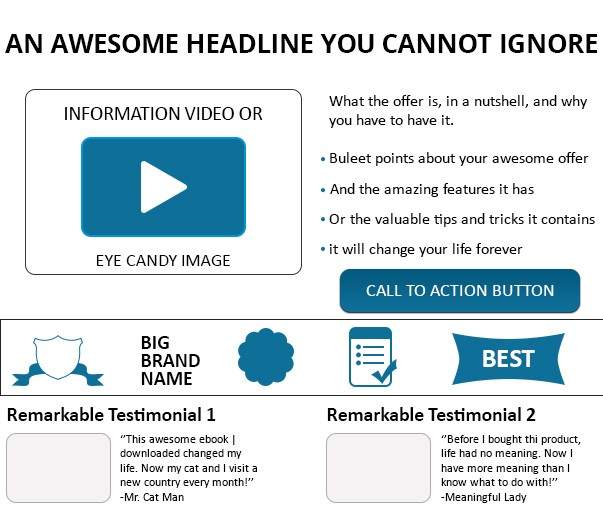If you create a beautiful and catchy PPC ad with an effective
Call-To-Action and do not link an appropriate landing page to it, then
all your efforts go in vain.
It can be very annoying and disappointing for a prospect when he clicks on a great looking ad and finds out that the landing page is irrelevant to the ad. Poor landing page management is a waste of money.
Use of landing pages in the PPC ads helps to:

It can be very annoying and disappointing for a prospect when he clicks on a great looking ad and finds out that the landing page is irrelevant to the ad. Poor landing page management is a waste of money.
Use of landing pages in the PPC ads helps to:
- Increase conversion
- Reduce Cost-Per-Click (CPC)
- Reduce bounce rate
Types of Landing Pages
- Click Through - This is the most basic type. It has general information about a product, why you should buy the product, when it will be available, etc. It provides a button to take the visitor to the page where the item can be purchased.
- Viral - This type of landing page tries to reach out to a large group of people. It is full of social sharing buttons and catchy content.
- Lead Capture - There is no exit route when it comes to a lead capture landing page. Such pages gather user data to send email marketing campaigns, connect with social media, call with special offers, etc.
- Mobile - It provides bare minimum contents with eye-pleasing appearance.
- Homepage - Sometimes organizations just link to the homepage, which is not a good move. The homepage is likely to offer different options and choices, when in fact the visitor is interested in a specific link to get something specific.
Elements of an Effective Landing Page
The primary goal of a landing page is to pursue the user to convert. An effective landing page has:- Engaging and beautiful appearance.
- Well-organized contents.
- Tight coupling between advertise and page contents.
- Simple, yet descriptive and informative.
- Clear and discrete Call-To-Action and offers.
- Capability of building trust about authenticity of a product or service the seller offers.
- Capability of pursuing the visitors to take action.

Creating a Well-Formatted and Informative Landing Page
A well-formatted landing page as shown here grabs the attention of the visitors and compels them to complete a conversion. For creating a good landing page, you need to do the following:Keep a Clean and Organized Design
- Use pleasant and appealing colors.
- Keep high contrast among page background and CTA buttons.
- Set appropriate size of image, text, and buttons on the page.
Keep Minimal Required Information
- Provide all necessary information that encourages the visitor to convert.
- Avoid anything extra and pop-ups.
- Highlight the key points of the product.
Use a Header to Convey Offer
- Use a header for displaying the value of the offer on the product and convince the visitor how unavoidable it is.
- Use sub-headings for descriptions.
Use Trust Signals or Trust Badges for Conveying Trustworthiness
- Trust signals include testimonials, like counts, capitalizing on word-of-mouth, reviews, etc.
- Trust Badges include any endorsements, logos of popular brands, certain recognitions, membership of some popular communities, etc.
Make It Mobile-Friendly
These days it has become absolutely necessary to make the landing pages compatible with mobile devices, as the conversion rate doubles if the website appears smoothly on mobiles.- Make the page easy to navigate
- Fast to load
Keep the Forms Short
- When it comes to gathering data from visitors, it is extremely necessary to keep the length of the forms short.
- Lesser the number of fields in the form, more the chances of converting a prospect.
- If more information is required to be gathered from the visitor, plan it on the thank you or similar page.
Match Contents of Landing Page and PPC Ad
Make sure you match the contents of the landing page with the keywords of the ad. This reduces visitor’s disappointment and cost, and encourages the visitor to convert.Testing the Landing Page
You can test a landing page manually or using a tool. You can test the following:- Loading time of the page.
- Appearance of page layout and design.
- Visibility of various elements on the page such as images and buttons.
- Focus on the buttons.
- Appropriate button functionality.

No comments:
Post a Comment